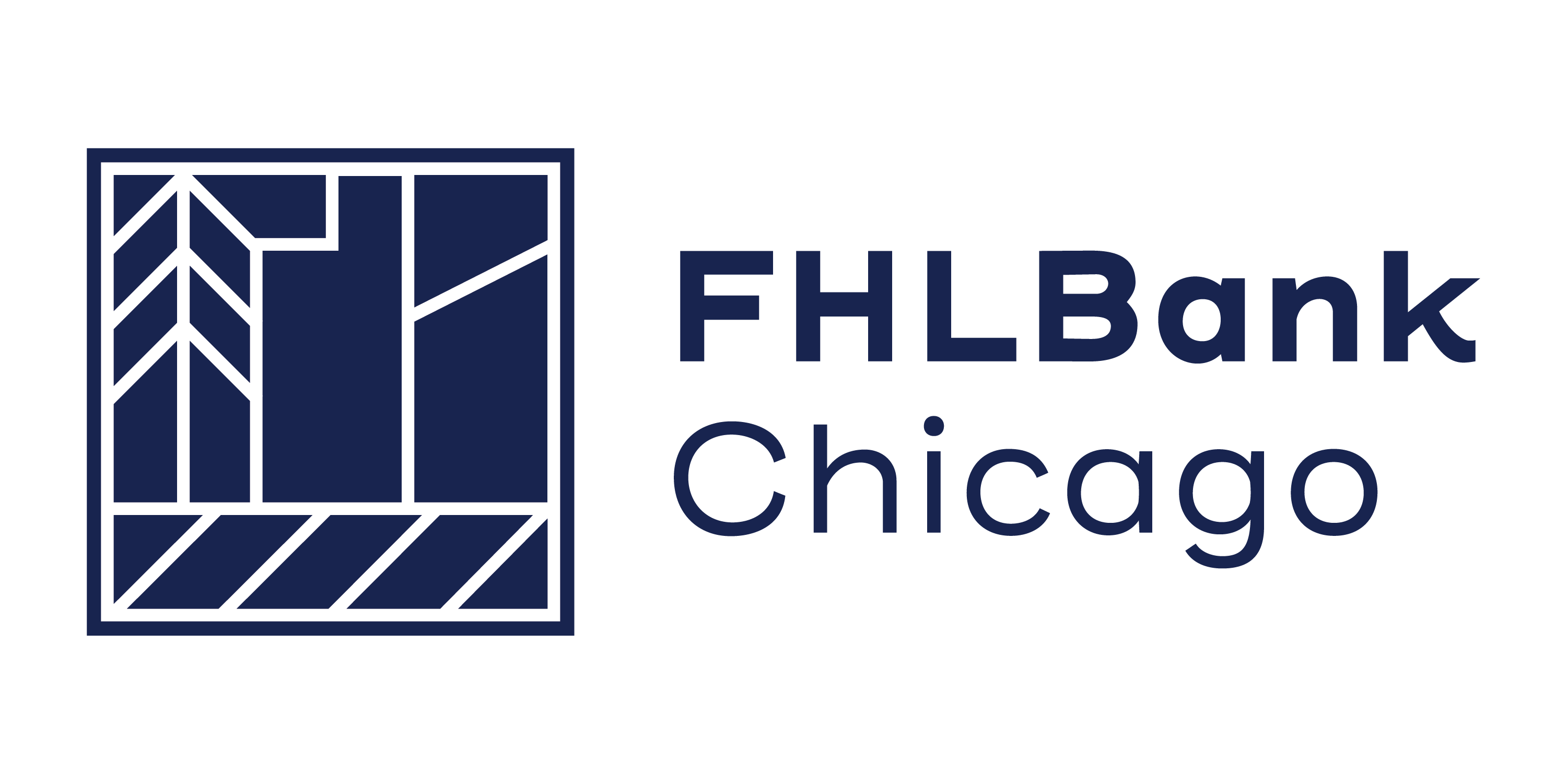Downpayment Plus® Program Benefits
Overview
The Downpayment Plus® (DPP®) program offers Federal Home Loan Bank of Chicago (FHLBank Chicago) members forgivable grants for down payment and closing cost assistance, up to $6,000, on behalf of their income-eligible customers. These easy-to-access grants are paid by the member on behalf of its borrowers at the time the borrower closes on their mortgage financing. The member is then reimbursed post-closing by FHLBank Chicago. This program is a great way to attract new customers to your mortgage business, develop repeat customers, and cross sell customers into deposit products and other lines of business. In 2020, 178 members disbursed $17 million in DPP grants on behalf of nearly 3,000 homebuyers!
The 2021 program opened on January 19, 2021. Sign up now and prepare for the busy spring home buying season! Read below for more information on the program and the benefits to be gained through participation.

Key Takeaways:
- Overview of DPP Program
- Best Practices and Common Misconceptions
- Value Add for Your Business
- How to Learn More
Overview of Program
DPP is a matching grant program funded by FHLBank Chicago that provides down payment and closing cost assistance for income-eligible homebuyers. The assistance provided is in the form of a forgivable grant (subsidy) paid on behalf of the borrower at the time the borrower closes on the first mortgage financed by your financial institution.
Key Program Eligibility Requirements:
|
Income Guidelines |
|
Households must have a projected annual income at or below 80% of area median income. Income requirements are adjusted for household size and location as determined by HUD.
|
|
Homebuyer Contribution |
|
Homebuyer must contribute a minimum of $1,000 to their home purchase transaction to be eligible for DPP. Contribution minimum is calculated as gross contribution less any cash back at closing. Cash back cannot exceed $250 per regulation.
|
|
Borrower Education and Counseling |
|
Borrowers are required to complete Pre-Purchase Education and Counseling, which much be provided by one of the following:
|
|
5-Year Retention |
|
Grants are forgiven to the member in equal parts monthly over a 5-year period (60 months). If the borrower sells or refinances their home prior to the end of the retention period, they may owe a portion of the grant in repayment; however, there are many situations in which repayment is waived, resulting in very few borrowers owing repayment on their grant. |
|
Use of Proceeds |
|
Eligible uses of grant proceeds include:
Excess funds must be applied to principal. |
Best Practices and Common Misconceptions
Best Practices
Our most successful DPP Program users have educated loan officers on DPP and incorporated DPP into the institution’s loan origination process. By familiarizing loan officers with qualifying income limits in your area, employees can identify DPP income-eligible borrowers as soon as a prospective customer engages with an officer. Further, loan officers that are well-versed in the DPP participation and documentation requirements for the homebuyer can clearly communicate these directly to the homebuyer at the beginning of the process.
Some members have further implemented a process to gather the required homebuyer documentation up front to facilitate the DPP reservation and the subsequent closing, reducing back and forth correspondence with the borrower. When borrowers come with the appropriate documentation, it simplifies the approval process. The below checklist summarizes the documentation required when reserving a DPP grant.

We encourage all of our DPP Program users to use FHLBank Chicago to further enable your success in the program. We have an entire team dedicated to our Community Investment programs, who are happy to assist you throughout the application, reservation, and closing process.
Common Misconceptions
A common misconception is that originating a loan while utilizing a DPP grant can limit the originator’s loan options. However, this grant is very flexible and can be paired with almost any loan program. DPP-paired loans can be used in conjunction with many different loan programs including but not limited to Section 184, FHA, VA, Rural development, or state agency first mortgage programs. The grant may also be paired with federal, state, or local grant programs. The originator is not required to hold the first mortgage and can sell it through the secondary market to investors such as FNMA, FHLMC, or through FHLBank Chicago’s Mortgage Partnership Finance® (MPF®) program. DPP does carry some restrictions on the terms of the first mortgage. The loan term and initial interest rate lock period must be at least five years, the loan cannot be interest-only, and the mortgage must be recorded with a retention agreement for the 5-year retention period.
Another common misconception is that DPP is only for first-time homebuyers. While first-time homebuyers make up a substantial portion of DPP recipients, all income-qualifying borrowers are eligible to receive DPP funds when securing a first mortgage. Members have used funds to assist seniors and other fixed income applicants.
Value Add for Your Business
By participating in DPP and marketing a grant opportunity to existing and prospective customers, members can attract and retain more lending business, potentially increasing market share in existing markets or penetrating new markets. With sustained low mortgage rates, many first-time homebuyers are entering the market. By offering this program to eligible households, you may be able to attract these new customers (or a new demographic of customers) and build a lasting relationship with them. Further, when making these loans in conjunction with a grant, you are improving the loan-to-value of your borrower, making the origination sounder. There are no fees associated with participation in the DPP program. Accessing this subsidy is a benefit of FHLBank Chicago membership.
Facilitating sustainable homeownership continues to be a priority for many of our members, and, by assisting prospective homeowners in realizing their homeownership goals through a grant and a loan, your institution directly supports the people and the communities you serve. Members have made loans in the past that would not have been possible without a DPP grant, directly facilitating affordable lending in their communities. Because DPP is only available to income-eligible households, your institution may also achieve affordable lending goals through the program, potentially eligible to gain CRA credit by serving low- to moderate-income households.
How To Learn More
Contact your sales director or email dpp@fhlbc.com if you want to learn more about the benefits of the DPP Program or have questions on how to get started. Other key resources are linked below for your convenience.
- DPP Program Page
- 2021 DPP Program Webinars
- 2021 DPP Program Guide
- HUD Income Guidelines
- Income Eligibility Form
Contributors
 |
Jessica Nick Senior Analyst Sales, Strategy, and Solutions |
 |
Jack Quinn III Senior Analyst Sales, Strategy, and Solutions |
 |
Travis Schroll Institutional Sales Director Sales, Strategy, and Solutions |
Disclaimer
The scenarios in this paper were prepared without any consideration of your institution’s balance sheet composition, hedging strategies, or financial assumptions and plans, any of which may affect the relevance of these scenarios to your own analysis. The Federal Home Loan Bank of Chicago (FHLBank Chicago) makes no representations or warranties (express or implied) about the accuracy, currency, completeness, or suitability of any information in this paper. This paper is not intended to constitute legal, accounting, investment, or financial advice or the rendering of legal, accounting, consulting, or other professional services of any kind. You should consult with your accountants, counsels, financial representatives, consultants, and/or other advisors regarding the extent these scenarios may be useful to you and with respect to any legal, tax, business, and/or financial matters or questions. In addition, certain information included here speaks only as of the particular date or dates included, and the information may have become out of date. The FHLBank Chicago does not undertake an obligation, and disclaims any duty, to update any of the information in this paper. Moreover, this paper may include forward-looking statements, which are based upon the FHLBank Chicago’s current expectations and speak only as of the date(s) thereof. These forward-looking statements involve risks and uncertainties including, but not limited to, the risk factors set forth in the FHLBank Chicago’s periodic filings with the Securities and Exchange Commission, which are available on its website. This paper may provide relevant links to other outside web sites unrelated to FHLBank Chicago. FHLBank Chicago is not responsible for such linked sites nor the content of any of the linked sites. You understand that when going to a third-party web site, that site is governed by the third party’s privacy policy and terms of use, and the third party is solely responsible for the content and offerings presented on its website.
There are associated risks with options. Because the FHLBank Chicago owns the option to terminate the advance prior to final maturity, the actual duration of the advance may be significantly lower than the stated maturity of the advance. Likewise, the FHLBank Chicago may not execute the put option, and the advance will be held to maturity in the case of falling interest rates. Contact your own accountants and attorneys before executing an A123 Putable Fixed Rate Advance.
Not all advance types are suitable for all members. Members must be aware of and understand the market and operational risks that are associated with advances with embedded options. Contact your accountants and attorneys before executing an advance with embedded options. Certain advances such as those that contain call or put options, interest rate caps, collars or floors, or other rate, term, or payment variations may require the acknowledgement of or execution of disclosure statements in which a member represents that it understands the risks associated with a particular advance.


